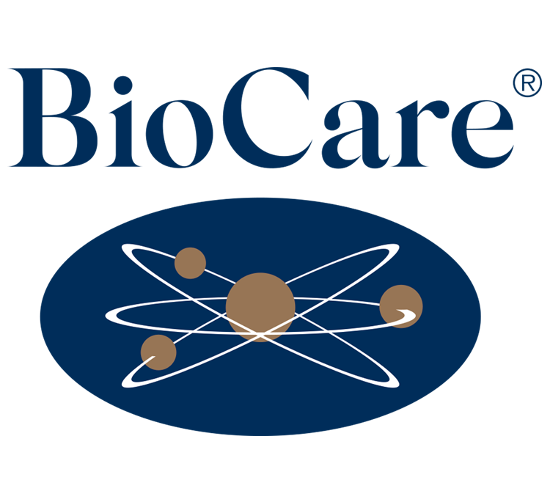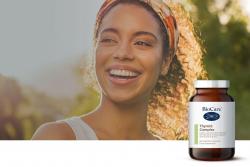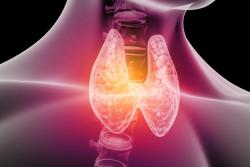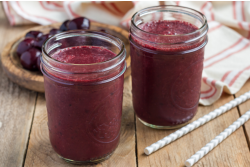Did you know that up to 35% of all body protein content is made up of one type of protein? This protein is a key component of our connective tissue – the most widely distributed tissue in the body, which binds, holds, supports and strengthens other body tissues, as well as insulates and protecting the organs. It makes up our ligaments, tendons, skin, joints, cartilage, bone and even the gut lining, blood vessels and our teeth!
It is, therefore, absolutely vital to the health and proper integrity and function of ALL body tissues and organs.
So, what is this protein?
We are talking about collagen, of course. You may have heard about collagen from face cream adverts, but as you can see, it does so much more than just preventing wrinkles!
Like any protein, collagen is made up of long chains of amino acids, however, the high concentration of proline and glycine make collagen quite unique. There are several steps and enzymatic processes in collagen synthesis, and by the end, we end up with a three-dimensional and adaptable structure. The important bit to remember here, is that those enzymes require vitamin C. Without an adequate supply of vitamin C, this process won’t work efficiently, and without continuous collagen supply, we can end up with weak connective tissue and problems with our joints, skin, bones and so on.
Each of those tissues, whether it’s your joints or your skin, are structurally different. Some are more elastic and stretchy (e.g. tendons), whereas some are tough and rigid (e.g. bone).
Apart from collagen, there are other important molecules that bind with each other forming a distinctive blend of material, each with different characteristics and functions. These include hyaluronic acid, glucosamine or chondroitin. Collagen often forms the backbone, onto which those other components attach,for example minerals such as calcium, phosphorus and magnesium in bones.
Common signs of weak connective tissue and decreased collagen synthesis:
- Decreased skin elasticity, sagging, wrinkles, easy bruising
- Joint problems such as arthritis, stiffness and pain
- Frequent sport injuries e.g. torn ligaments
- Broken facial capillaries - so called ‘spider veins’
- Bone problems – osteopenia, osteoporosis, fractures
- Rare conditions such as Benign Joint Hypermobility Syndrome (BJHS) or Ehlers-Danlos Syndrome, which are caused by genetic mutations which disrupt the structure, production, or processing of collagen
- Intestinal permeability, aka ‘leaky gut’
- If you have an inflammatory condition, there is a higher chance of collagen damage
Collagen synthesis generally decreases with age Making our skin less elastic. Some studies indicated that the collagen production of sun-protected skin of 80 years old decreases by approximately 75% compared to 18-29 years of age.(1)
Not all collagen is equal
In fact, our body produces various types of collagen, for example type I, II, III and so on. Type I forms the vast majority of body collagen However, our cartilage mainly consists of collagen type II. They both have similar molecular structure, but different chain composition.(2)
Although we can buy collagen in powders or supplements, it is not guaranteed that it will be used properly in the body, because it is quite a big molecule and it gets broken down in the stomach, rendering it less useful. That’s why it is important to get the right type of collagen, with proven benefits.
Marine Collagen displays high resemblance to human collagen and is, therefore, easily absorbed through the gut wall and quickly delivered to the target tissues.(3–5) It contains 8 out of 9 essential amino acids which cannot be produced by human body itself. Research showed that marine collagen can improve skin elasticity,3iv hydration and reduce the appearance of wrinkles.6 This form can also improve the synthesis of glycosaminoglycans (GAGs) – another component of joints, ligaments and tendons.(7)
In turn, collagen type II is the main fibril-forming collagen in cartilage, consisting of 95% of all collagen types. It has a similar structure to collagen type I but a different chain composition (2). Its deficiency is associated with many diseases, such as skeletal dysplasia, rheumatoid arthritis and osteoarthritis (8). It can support joint health, stiffness and mobility (9,10). Studies have shown that collagen type II can improve joint flexibility and extensibility (11). It can also decrease serum levels of inflammatory cytokines such as IL-1β, IL-6, and TNF-a ipso facto, decreasing joint degradation,12 joint inflammation and pain in osteoarthritis (12).
Hydrolysed or undenatured collagen – which is better?
Hydrolysed collagen can be obtained from cartilage or other connective tissue while undenatured collagen can only be obtained from cartilage.13 They have different structures and, thus, mechanisms of action. Hydrolysed collagen is broken down into smaller chains called peptides, which are more easily absorbed by the body, making it more bioavailable.
We also need to support the body’s ability to produce collagen and prevent it from getting damaged. In addition, we can provide other nutrients to support general connective tissue health. Here are some of the main ones:
- Vitamin C increases collagen synthesis by acting as a co-factor for hydroxylase enzymes.(14)
- Rutin is a flavonoid which has antioxidant properties (15,16). It supports circulation, decreasing blood vessel fragility and permeability. It can be helpful for thread and varicose veins and reduce the tendency to bruise easily.(17)
- Hesperidin helps to spare collagen in connective tissue (18) and reduces inflammation (19).
- Hyaluronic Acid is a viscous substance found in different types of connective tissue like skin and cartilage, muscles, organs –e.g. brain and eyes. It can reduce wrinkles (20), and increase skin moisture (21)
- Methyl Sulphonyl Methane (MSM) is a naturally occurring sulfur compound with antioxidant and anti-inflammatory properties(22). MSM can support skin, hair and nail quality (23), and reduce facial wrinkles (24)
- Rosehips provide more vitamin C than citrus fruits (25) and have high antioxidant activity (26). Rosehip’s anti-inflammatory and antioxidant properties makes it a potential agent for protecting joints and supporting osteoarthritis (27), by reducing degradation of joint cartilage (28).
- Nucleotides are organic compounds which are part of DNA and RNA, essential for cell division, repair (29) and regeneration of damaged tissue (30).
- Boswellia – Traditionally used in folk medicine for centuries. It has been shown to be beneficial in inflammatory diseases such as rheumatoid arthritis, chronic bronchitis, asthma and chronic inflammatory bowel diseases (ulcerative colitis and Crohn’s disease) (31-32).
- Glucosamine (and related compounds like chondroitin) form glycosaminoglycans and prevent collagen degradation and free radical production (33).
Antioxidants such as berry/cherry extracts, grapeseed (34) and pine bark (35) reduce collagen breakdown.
All of those nutrients together are much more powerful than a single ingredient. Because of the abundance of collagen in the body, supporting its production can potentially have many positive effects on our health.
References
1. Varani J, Dame MK, Rittie L, et al. Decreased Collagen Production in Chronologically Aged Skin: Roles of Age-Dependent Alteration in Fibroblast Function and Defective Mechanical Stimulation. Am J Pathol. 2006;168(6):1861-1868. doi:10.2353/AJPATH.2006.051302
2. Collagen Type 2 - an overview | ScienceDirect Topics. Accessed September 7, 2023. https://www.sciencedirect.com/topics/nursing-and-health-professions/collagen-type-2
3. De Luca C, Mikhal’Chik E V, Suprun M V, Papacharalambous M, Truhanov AI, Korkina LG. Skin antiageing and systemic Redox effects of supplementation with marine collagen peptides and plant-derived antioxidants: A single-blind case-control clinical study. Oxid Med Cell Longev. 2016;2016. doi:10.1155/2016/4389410
4. Ichikawa S, Morifuji M, Ohara H, Matsumoto H, Takeuchi Y, Sato K. Hydroxyproline-containing dipeptides and tripeptides quantified at high concentration in human blood after oral administration of gelatin hydrolysate. Int J Food Sci Nutr. 2010;61(1):52-60. doi:10.3109/09637480903257711
5. Shigemura Y, Kubomura D, Sato Y, Sato K. Dose-dependent changes in the levels of free and peptide forms of hydroxyproline in human plasma after collagen hydrolysate ingestion. Food Chem. 2014;159:328-332. doi:10.1016/j.foodchem.2014.02.091
6. Inoue N, Sugihara F, Wang X. Ingestion of bioactive collagen hydrolysates enhance facial skin moisture and elasticity and reduce facial ageing signs in a randomised double-blind placebo-controlled clinical study. J Sci Food Agric. 2016;96(12):4077-4081. doi:10.1002/jsfa.7606
7. Asserin J, Lati E, Shioya T, Prawitt J. The effect of oral collagen peptide supplementation on skin moisture and the dermal collagen network: Eevidence from an ex vivo model and randomized, placebo-controlled clinical trials. J Cosmet Dermatol. 2015;14(4):291-301. doi:10.1111/jocd.12174
8. Wang H. A Review of the Effects of Collagen Treatment in Clinical Studies. Polymers (Basel). 2021;13(22). doi:10.3390/POLYM13223868
9. Harris RB, Fonseca FLA, Sharp MH, Ottinger CR. Functional Characterization of Undenatured Type II Collagen Supplements: Are They Interchangeable? https://doi.org/101080/1939021120211931621. 2021;19(6):717-732. doi:10.1080/19390211.2021.1931621
10. Sadigursky D, Magnavita VFS, de Sá CKC, de Sousa Monteiro H, Braghiroli OFM, Matos MAA. UNDENATURED COLLAGEN TYPE II FOR THE TREATMENT OF OSTEOARTHRITIS OF THE KNEE. Acta Ortop Bras. 2022;30(2):e240572. doi:10.1590/1413-785220223002240572
11. Schön C, Knaub K, Alt W, Durkee S, Saiyed Z, Juturu V. UC-II Undenatured Type II Collagen for Knee Joint Flexibility: A Multicenter, Randomized, Double-Blind, Placebo-Controlled Clinical Study. Journal of Integrative and Complementary Medicine. 2022;28(6):540. doi:10.1089/JICM.2021.0365
12. Orhan C, Juturu V, Sahin E, et al. Undenatured Type II Collagen Ameliorates Inflammatory Responses and Articular Cartilage Damage in the Rat Model of Osteoarthritis. Front Vet Sci. 2021;8:617789. doi:10.3389/FVETS.2021.617789/BIBTEX
13. Martínez-Puig D, Costa-Larrión E, Rubio-Rodríguez N, Gálvez-Martín P. Collagen Supplementation for Joint Health: The Link between Composition and Scientific Knowledge. Nutrients. 2023;15(6). doi:10.3390/NU15061332
14. Boyera N, Galey I, Bernard BA. Effect of vitamin C and its derivatives on collagen synthesis and cross-linking by normal human fibroblasts. Int J Cosmet Sci. 1998;20(3):151-158. doi:10.1046/J.1467-2494.1998.171747.X
15. Kostyuk VA, Potapovich AI. Antiradical and chelating effects in flavonoid protection against silica-induced cell injury. Arch Biochem Biophys. 1998;355(1):43-48. doi:10.1006/ABBI.1998.0708
16. Escarpa A, González MC. High-performance liquid chromatography with diode-array detection for the determination of phenolic compounds in peel and pulp from different apple varieties. J Chromatogr A. 1998;823(1-2):331-337. doi:10.1016/S0021-9673(98)00294-5
17. Clement DL, Abenhaim L, Norgren L, et al. Management of venous edema: insights from an international task force. Angiology. 2000;51(1):13-17. doi:10.1177/000331970005100104
18. Balakrishnan A, Menon VP. Effect of hesperidin on matrix metalloproteinases and antioxidant status during nicotine-induced toxicity. Toxicology. 2007;238(2-3):90-98. doi:10.1016/j.tox.2007.04.022
19. Choi IY, Kim SJ, Jeong HJ, et al. Hesperidin inhibits expression of hypoxia inducible factor-1 alpha and inflammatory cytokine production from mast cells. Mol Cell Biochem. 2007;305(1-2):153-161. doi:10.1007/s11010-007-9539-x
20. Oe M, Sakai S, Yoshida H, et al. Oral hyaluronan relieves wrinkles: A double-blinded, placebo-controlled study over a 12-week period. Clin Cosmet Investig Dermatol. 2017;10:267-273. doi:10.2147/CCID.S141845
21. Kawada C, Yoshida T, Yoshida H, et al. Ingested hyaluronan moisturizes dry skin. Nutrition Journal 2014 13:1. 2014;13(1):1-9. doi:10.1186/1475-2891-13-70
22. Joung YH, Lim EJ, Darvin P, et al. MSM Enhances GH Signaling via the Jak2/STAT5b Pathway in Osteoblast-Like Cells and Osteoblast Differentiation through the Activation of STAT5b in MSCs. PLoS One. 2012;7(10). doi:10.1371/JOURNAL.PONE.0047477
23. Beneficial Effects of a Sulfur-Containing Supplement on Hair and Nail Condition | Natural Medicine Journal. Accessed May 17, 2022. https://www.naturalmedicinejournal.com/journal/beneficial-effects-sulfur-containing-supplement-hair-and-nail-condition
24. Muizzuddin N, Benjamin R. Beauty from within: Oral administration of a sulfur-containing supplement methylsulfonylmethane improves signs of skin ageing. Int J Vitam Nutr Res. Published online 2020. doi:10.1024/0300-9831/A000643
25. Roman I, Stǎnilǎ A, Stǎnilǎ S. Bioactive compounds and antioxidant activity of Rosa canina L. biotypes from spontaneous flora of Transylvania. Chem Cent J. 2013;7(1). doi:10.1186/1752-153X-7-73
26. Tumbas VT, Čanadanović-Brunet JM, Četojević-Simin DD, Ćetković GS, Dilas SM, Gille L. Effect of rosehip (Rosa canina L.) phytochemicals on stable free radicals and human cancer cells. J Sci Food Agric. 2012;92(6):1273-1281. doi:10.1002/jsfa.4695
27. Winther K, Apel K, Thamsborg G. A powder made from seeds and shells of a rose-hip subspecies (Rosa canina) reduces symptoms of knee and hip osteoarthritis: A randomized, double-blind, placebo-controlled clinical trial. Scand J Rheumatol. 2005;34(4):302-308. doi:10.1080/03009740510018624
28. Schwager J, Richard N, Schoop R, Wolfram S. A Novel Rose Hip Preparation with Enhanced Anti-Inflammatory and Chondroprotective Effects. Mediators Inflamm. 2014;2014. doi:10.1155/2014/105710
29. Hess JR, Greenberg NA. The role of nucleotides in the immune and gastrointestinal systems: Potential clinical applications. Nutrition in Clinical Practice. 2012;27(2):281-294. doi:10.1177/0884533611434933
30. Uauy R, Quan R, Gil A. Role of nucleotides in intestinal development and repair: implications for infant nutrition. J Nutr. 1994;124(8 Suppl). doi:10.1093/JN/124.SUPPL_8.1436S
31. Boswellia: an evidence-based systematic review by the Natural Standard Research Collaboration - PubMed. Accessed August 15, 2023. https://pubmed.ncbi.nlm.nih.gov/15829470/
32. Singh GB, Atal CK. Pharmacology of an extract of salai guggal ex-Boswellia serrata, a new non-steroidal anti-inflammatory agent. Agents Actions. 1986;18(3-4):407-412. doi:10.1007/BF01965005/METRICS
33. Tiku ML, Narla H, Jain M, Yalamanchili P. Glucosamine prevents in vitro collagen degradation in chondrocytes by inhibiting advanced lipoxidation reactions and protein oxidation. Arthritis Res Ther. 2007;9(4):R76. doi:10.1186/AR2274
34. Boniface R, Robert AM. [Effect of anthocyanins on human connective tissue metabolism in the human]. Klin Monbl Augenheilkd. 1996;209(6):368-372. doi:10.1055/S-2008-1035336
35. Grimm T, Chovanová Z, Muchová J, et al. Inhibition of NF-κB activation and MMP-9 secretion by plasma of human volunteers after ingestion of maritime pine bark extract (Pycnogenol). J Inflamm. 2006;3:1-6. doi:10.1186/1476-9255-3-1






